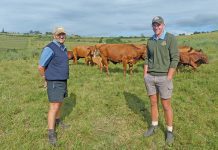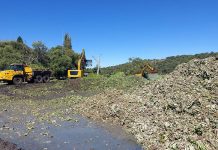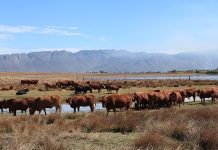Equine sports therapy can be useful to head off small problems affecting horses before they become large ones.
Have you noticed unexplained behavioural changes in your horse – a refusal to change leads, or a sudden resistance to you or the farrier? If the horse has had an injury or accident or even a major conformation fault, the answers would be obvious.
If the horse has been examined by a vet with no conclusive answers, an equine therapist might be of some help. Muscles that can’t secure their own release can cause many problems found in the equine athlete.
Although massage and touch will not cure a condition, they do stimulate the body to heal itself. They will be beneficial to:
• Improve gait quality, performance, range of motion and flexibility.
• stamina and disposition.
• Help keep muscle injuries that accompany orthopaedic- type problems pliable and pain-free.
• Keep the whole body in a better condition.
• Relieve tension and improve circulation.
• Stimulate the elimination of toxins and waste products.
• Lengthen the connective tissue and enhance muscle tone.
Equine sports therapy is advised in the following instances:
• horse won’t take the correct lead in canter.
• The horse battles to come on to the bit.
• horse won’t engage its hind quarters.
• horse is stiff and sore.
• a follow-up treatment once a veterinarian has diagnosed lameness or treated a wound.
• The horse has emotional disorders.
• For feeding and training advice.
• horse is rearing for no explained reason.
• horse is returning to work after an injury.
• horse is acting strangely for no known reason.
Structure of a muscle muscle has two ends and a belly. One end is called the origin or anchor, and the other end is called the insertion. The origin pulls and moves the joint, the insertion is where the motion takes place, and the belly is where the power is. If a muscle is not working properly, another muscle will have to work harder. Tight muscles are fibres lying very close to one another. In effect, the muscles are shortened and can’t release quickly enough, resulting in a loss of full motion. As one muscle group tightens, the neighbouring group of muscles feels the strain and takes extra stress. This continues until an injury occurs.
The main causes of muscle problems are:
The speed of contractions.
Th e strength of contractions.
Isometric contractions, such as when a horse has been tied down. Avoid using tie-downs and draw reins.
The protective splinting that develops around an injury. This is common when a horse develops hip or shoulder problems after an injury in the lower leg, pastern or hoof.
Once an injury has been properly treated, an equine therapist can restore the muscle tissue to its normal function. – Kim Dyson Contact Kim Dyson on 082 888 6511. |fw








